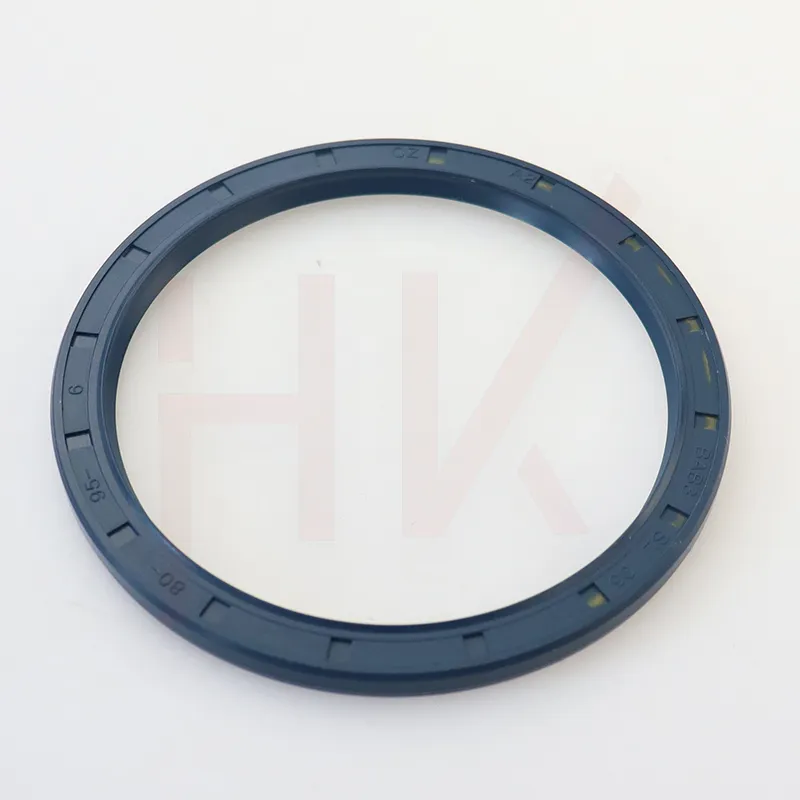Nov . 09, 2024 22:53 Back to list
Understanding Wheel Oil Seals and Their Importance in Vehicle Maintenance
Understanding Wheel Oil Seals Importance, Function, and Maintenance
Wheel oil seals, often referred to simply as oil seals or wheel seals, are crucial components in many automotive and industrial applications. They serve an essential purpose in maintaining the functionality and longevity of vehicles and machinery by preventing leaks and protecting against contamination. This article delves into the importance, function, and maintenance of wheel oil seals, shedding light on why they should not be overlooked.
What Are Wheel Oil Seals?
Wheel oil seals are circular components typically made from rubber, polyurethane, or other durable materials. They are designed to fit snugly around rotating shafts, such as axles in vehicles, to create a barrier that retains lubricant within the assembly while preventing dirt, water, and other contaminants from entering. The primary function of these seals is to facilitate smooth rotational movement, reduce friction, and ensure optimal performance of the wheel assembly.
Importance of Wheel Oil Seals
The importance of wheel oil seals cannot be overstated. Without proper sealing, lubricant can escape from the assembly, leading to increased friction and heat generation. This can cause premature wear and damage to critical components, resulting in costly repairs or even complete failure of the wheel assembly. Furthermore, the ingress of contaminants can lead to corrosion and degradation of the lubricating oil, significantly shortening the life of the wheel bearings and related components.
Moreover, wheel oil seals help maintain the efficiency of the overall system
. By ensuring that lubricants remain in place, these seals contribute to a vehicle's fuel efficiency and performance. Any loss of lubricant can lead to higher energy consumption and reduced efficacy, ultimately impacting the vehicle's operational costs.Functionality and Design
wheel oil seal

The design and functionality of wheel oil seals are tailored to the specific requirements of the vehicle or machinery they are intended for. Standard features include a flexible lip that compresses against the shaft, creating a tight seal while allowing some flexibility to absorb vibrations. This design is crucial for withstanding high rotational speeds and dynamic movements.
In addition to the sealing lip, many wheel oil seals incorporate additional features such as dust covers or shields to further protect against external contaminants. The choice of material also plays a significant role; materials must be resistant to various factors including temperature fluctuations, chemical exposure, and ozone degradation. These characteristics ensure that the seals not only perform effectively but also have a prolonged lifespan.
Maintenance and Inspection
Regular maintenance and inspection of wheel oil seals are vital to ensure their functionality. A common issue is wear and tear, which can result from prolonged exposure to high-temperature conditions or harsh environments. Signs of failure may include oil leaks around the wheel hub, unusual noises from the wheels, or increased play in the wheel assembly.
When performing maintenance, it is crucial to inspect the condition of the seals routinely. If any signs of damage or wear are detected, it is imperative to replace them promptly to avoid further damage to the assembly. Proper installation is equally important—ensuring that the seals are correctly aligned and seated can prevent future problems.
Conclusion
Wheel oil seals are a small yet indispensable component of vehicle and machinery assemblies. They perform vital functions that protect against leaks and contamination while enhancing the overall efficiency and longevity of the system. Regular inspection and maintenance of these seals are essential to preventing costly repairs and ensuring optimal performance. As vehicles and machinery continue to evolve, understanding the significance of wheel oil seals becomes increasingly important for manufacturers, technicians, and vehicle owners alike. Investing time and resources in the upkeep of these components can lead to improved performance and a more reliable operation throughout the lifespan of the equipment.
-
TCN Oil Seal Metal Ring Reinforcement for Heavy Machinery
NewsJul.25,2025
-
Rotary Lip Seal Spring-Loaded Design for High-Speed Applications
NewsJul.25,2025
-
Hydraulic Cylinder Seals Polyurethane Material for High-Impact Jobs
NewsJul.25,2025
-
High Pressure Oil Seal Polyurethane Coating Wear Resistance
NewsJul.25,2025
-
Dust Proof Seal Double Lip Design for Construction Equipment
NewsJul.25,2025
-
Hub Seal Polyurethane Wear Resistance in Agricultural Vehicles
NewsJul.25,2025
-
The Trans-formative Journey of Wheel Hub Oil Seals
NewsJun.06,2025
Products categories
















